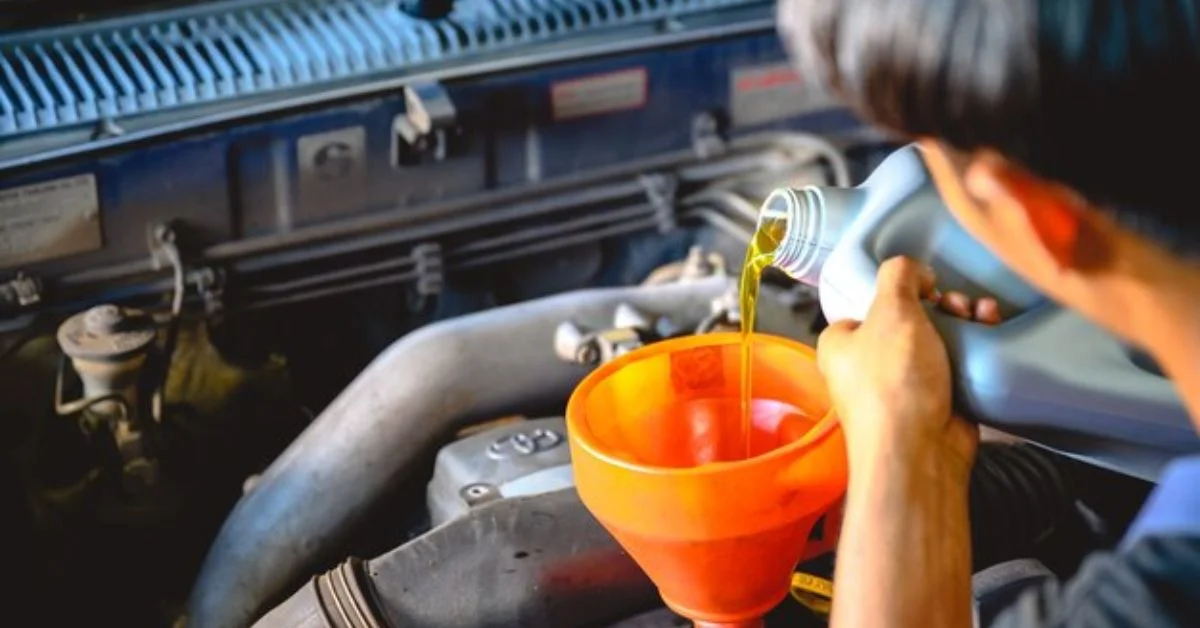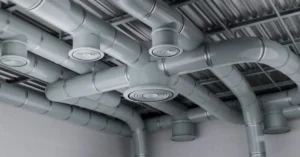When it comes to the heart of your vehicle, few components play as crucial a role as the oil pump. This unsung hero of the internal combustion engine ensures that every moving part is lubricated and functioning smoothly. Without it, your engine would face serious wear and tear, leading to costly repairs or even catastrophic failure. That’s why regular maintenance of your oil pump is essential for keeping your engine running at its best.
Ignoring this key component can lead to diminished performance and a shorter lifespan for your vehicle. In this guide, we’ll explore why maintaining the oil pump should be high on every car owner’s priority list and share practical tips for ensuring its longevity. Let’s dive into the essentials!
I. Oil pump’s Role in an Internal Combustion Engine
An oil pump is a critical component of an internal combustion engine. It circulates engine oil under pressure to lubricate moving parts, reducing friction and wear. This ensures that the engine operates smoothly and efficiently.
Without proper lubrication, components can overheat and fail prematurely. The oil pump also helps in cooling various engine parts while removing contaminants from the oil, allowing for optimal performance and longevity of your vehicle’s engine system.
Importance of regular maintenance for optimal engine performance and longevity
Regular maintenance of your oil pump is essential for keeping your engine running smoothly. A well-functioning oil pump ensures that all moving parts are properly lubricated, reducing friction and wear. This helps prevent costly repairs down the road.
Neglecting maintenance can lead to inadequate lubrication, which may result in overheating or even engine failure. By staying on top of routine checks and fluid changes, you can enhance your vehicle’s overall performance while extending its lifespan significantly. Prioritizing this aspect will save you time and money in the long run.
II. Lubricating System
The lubricating system in an internal combustion engine is essential for its smooth operation. It ensures that all moving parts are coated with oil, reducing friction and preventing wear. A well-functioning system allows the engine to perform efficiently, promoting better fuel economy.
The oil pump plays a crucial role within this system by circulating oil throughout the engine components. It maintains a steady flow of lubricant, ensuring that each part receives adequate protection. Without proper lubrication, critical components can overheat or suffer damage, ultimately leading to costly repairs and reduced engine life.
Understanding how the lubricating system functions
The lubricating system in an internal combustion engine is vital for reducing friction between moving parts. It circulates oil to coat these components, ensuring smooth operation and preventing wear over time.
As the engine runs, the oil absorbs heat and contaminants, helping to maintain optimal operating temperatures. This circulation not only protects against damage but also enhances overall efficiency, allowing the engine to perform at its best under varying conditions. Understanding this system highlights just how crucial proper maintenance of the oil pump truly is.
Role of the oil pump in ensuring proper lubrication of engine components
The oil pump plays a critical role in the smooth operation of an internal combustion engine. By circulating oil throughout the engine, it ensures that all moving parts receive adequate lubrication, reducing friction and wear. This is essential for maintaining optimal performance and extending the life of engine components.
Without a properly functioning oil pump, vital areas like bearings and camshafts would suffer from insufficient lubrication. This could lead to overheating or even catastrophic failure. Regular maintenance of the oil pump is crucial to keep these components operating efficiently and reliably over time.
III. Oil Pressure
Maintaining optimal oil pressure is crucial for the health of your engine. The oil pump circulates oil, creating a balance that supports proper lubrication throughout the engine components. When the pressure is just right, it ensures maximum efficiency and performance.
Conversely, both high and low oil pressure can lead to significant issues. Low pressure may cause insufficient lubrication, leading to wear and tear on critical parts. High pressure can strain seals and gaskets, resulting in leaks or even catastrophic failures. Keeping an eye on your oil pressure helps prevent these costly problems down the line.
Significance of maintaining optimal oil pressure levels
Maintaining optimal oil pressure levels is crucial for the health of any internal combustion engine. Oil pressure ensures that every component receives adequate lubrication, reducing friction and wear over time. When oil flows at the right pressure, it protects critical parts like bearings and camshafts from damage.
On the other hand, fluctuating oil pressure can lead to severe consequences. Low oil pressure may result in insufficient lubrication, causing overheating and eventual engine failure. Conversely, high oil pressure could stress seals and gaskets, leading to leaks. Striking a balance is vital for sustained performance and reliability.
Consequences of both high and low oil pressure on engine operation
High oil pressure can cause excessive strain on engine components. It may lead to leaks and seal failures, resulting in costly repairs. When the oil is forced through at an elevated rate, it can also create unnecessary friction that hampers efficiency.
On the other hand, low oil pressure poses its own set of dangers. Insufficient lubrication can result in increased wear and tear on essential parts like bearings and camshafts. This may ultimately lead to catastrophic engine failure if left unaddressed. Keeping a close eye on these levels is critical for your engine’s health.
IV. Pump Drive
Oil pumps rely on various drive mechanisms to function effectively. These can include gear drives, chain drives, or belt-driven systems. Each mechanism has its unique advantages and drawbacks that influence how the pump operates within an engine.
The choice of pump drive affects not only efficiency but also overall performance. For instance, a gear-driven oil pump may provide a more consistent flow under high pressure compared to other types. Understanding these differences helps in selecting the right system for specific engine requirements and optimizing longevity.
Exploring the various pump drive mechanisms in oil pumps
Oil pumps utilize various drive mechanisms, each designed to cater to specific engine requirements. The most common types include gear-driven, chain-driven, and belt-driven systems. Gear drives are often preferred for their reliability and efficiency in high-pressure situations.
Chain and belt drives offer flexibility in design but may require more maintenance due to wear over time. Understanding these differences can help you choose the right oil pump for your vehicle’s needs while ensuring optimal performance in diverse driving conditions. Keeping this knowledge in mind aids not only selection but also maintenance strategies that enhance longevity.
How different pump drives affect the efficiency and performance of the oil pump
The type of pump drive used in an oil pump significantly influences its efficiency and performance. For instance, gear-driven pumps tend to deliver consistent pressure, making them ideal for high-performance engines. They can handle varying loads effectively, ensuring that lubrication remains optimal.
On the other hand, belt-driven pumps offer flexibility and can be adjusted based on engine speed. However, they may not maintain pressure as consistently under extreme conditions. Choosing the right drive mechanism is crucial for maximizing the oil pump’s effectiveness and supporting overall engine health.
V. Wet and Dry Sump Systems
Wet sump systems are the most common in vehicles. They use a reservoir located at the bottom of the engine to collect oil, which is then pumped through various components. This design is simple and effective for standard driving conditions.
On the other hand, dry sump systems are often found in high-performance engines. They utilize multiple oil pumps and an external storage tank to ensure optimal oil flow even during aggressive maneuvers. This allows for better lubrication under extreme conditions, reducing risks of cavitation or starvation that can damage critical engine parts.
VI. Tips for Longevity
Regularly check and change your oil to keep it clean and effective. Using the right type of oil can make a significant difference in pump performance, so always adhere to manufacturer recommendations.
Monitor your engine for any unusual noises or changes in performance. Addressing issues early on can save you from costly repairs down the line. Additionally, invest in periodic professional inspections to ensure everything is functioning properly, including your oil pump system.
READ MORE:Why a Used Mazda CX-5 is the Perfect SUV for Next Purchase
VII. Conclusion
Maintaining your oil pump is crucial for keeping your engine running smoothly. Regular checks and maintenance can prevent costly repairs down the line. By understanding how the oil pump works, monitoring oil pressure, and recognizing the differences in sump systems, you can take proactive steps to extend its lifespan. Implementing simple tips for longevity will enhance overall engine performance. Taking these measures not only ensures that your vehicle remains reliable but also contributes to a more efficient operation on the road. Keeping an eye on this vital component pays off in both performance and peace of mind.









